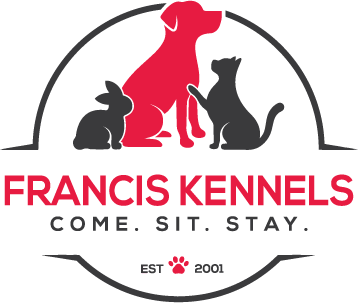Emilee Brewer
Just like brushing your hair and teeth or taking a shower, dogs have important grooming needs. Each breed is going to be different, but there are some basics you should be aware of!
As many owners know, shedding is a very real problem. In the winter, dogs will grow their coats out to insulate better in the cold. Once summer hits, they shed this coat, and it gets all over your nice couch. Shedding is perfectly normal, but regular brushing is an excellent way to minimize shedding and keep your furniture its original color! Brushing will also help to keep their coat in good health. It helps to remove dirt, spread natural oils throughout their coat, keep their skin clean, and prevent any tangles. This is also a great time to look your pet over for any possible fleas or ticks.
How you brush and how often you brush will largely depend on your dog’s hair type. If they have a short and dense coat like a retriever, brushing once a week is a good amount. You’ll want to use a slicker brush to help remove any tangles and then go back through with a bristle brush to catch all the dead hair. Make sure you also get the tail! For a short, smooth coat like that of a chihuahua, brushing once a week will also suffice. A rubber brush is recommended to loosen dead skin and dirt; then, follow with the bristle brush for loose hair. Finally, if your pooch has a long coat, like a samoyed, ideally you want to give them attention daily. These coats can easily get matted and hold dirt so multiple brushings are a must! These types of dogs need routine grooms too. Breeds like Komondors are even more high maintenance, so make sure you know what you’re getting into before getting a long-haired dog.
Another important grooming need: dental care. As anyone who’s had dental problems knows, dental care is not cheap. Prevention is a hell of a lot cheaper than repair. One way to keep the bad breath away is with dental chews. PetMD recommends looking for dental treats that have the Veterinary Oral Health Council’s Seal of Acceptance to make sure your dog is getting the best care. Dental chews help to reduce plaque and tartar buildup and freshen breath. You can also literally brush their teeth. There are toothpastes flavored like chicken and beef so your dog enjoys their daily brushing. For small dogs, there are finger toothbrushes you can buy, and for large dogs, you can get them a regular ole toothbrush. It’s recommended to brush their teeth about 2-3 times a week and you brush them just like you brush your own teeth. No need to worry about rinsing their mouth out though! You can also take your dog to the vet for routine dental checkups and cleanings. Humans may brush their teeth daily, but we still need a dentist to check everything over and get those hard-to-reach spots. The same is true for dogs. Your dog will go under general anesthesia so the vet can properly get all the plaque and check for gingivitis.
Nail trims are also essential. Nail trims can easily be done at home, but there are plenty of groomers and vets that will trim your pet’s nails for you. When you first get your dog, start playing with their paws. Just massage them or inspect them; something to get them used to their paws being handled. This will lessen any future anxiety they may have around getting their nails trimmed. You can trim their nails with a traditional trimmer, or you can grind their nails. Both are great options, just know which one your dog prefers. Trim little bits off at a time because trimming too much risks hitting the quick and making your dog bleed. Be very careful, and if you’re not comfortable doing it at first, ask your vet to show you how to do it!
Routine nail trims are important to prevent their nails from getting too long and causing discomfort. Long nails can reduce traction. They can also cause deformed feet and injure the tendons.
Finally, it’s important to check your dog’s ears consistently. Ear checks are important for dogs who produce a lot of wax or have hairy ears. Breeds with long ears are prone to infections, so checking regularly is great prevention. Obviously, you don’t want to clean them so often that their ears get irritated, but a quick cleanse if they look dirty will feel great! ASPCA recommends using a cotton ball or a small piece of gauze dampened with ear cleaner or hydrogen peroxide to clean the inside. Clean gently and make sure to lift any dirt or debris away from the ear.
With these simple tips, you can keep your dog nice and healthy. Their coat will shine, their teeth will be pearly, and you’ll prevent infection and future problems. While some grooming can be done at home, it’s best to take your dog to a professional (like Francis Kennels wink wink).



